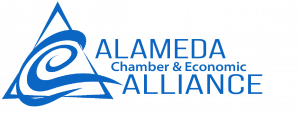
Workplace trends come and go like snack carts. Yet these trends are positioned to revolutionize the way we work because they are just so darn appealing to most employees.
But before we go into these workplace trends, know that they are not for everyone. Your business may not be able to function if you put them into operation. There are some businesses that simply require employees in seats, seats that are customer-facing in a central location. But if you do have the flexibility to adopt some of these, you may see substantial changes in productivity and morale. This is what the employee of tomorrow is looking for.
Asynchronous Office Environments
Say good-bye to 8-5 or even shift work. Now, there’s something leaner. Asynchronous work environments don’t have set schedules. They allow employees to work an agreed upon number of hours a week. Work may be completed at any time and anywhere. That means Employee “A” could work 8-11 AM and again from 5-10 PM. Employee “B” works her 32 hours in only three days out of the week.
Some asynchronous office environments have employees in different time zones. Some are in a central office that pays no heed to time, only product being moved/created or duties getting done. This is no different than how you might work with a freelancer. You know they’re doing the work and you know the deadline for deliverables. You’re just not in control of when it’s worked on.
Flattening the Pyramid: welcome Holacracy
Some companies adopted flat leadership environments (or Holacracy) when it was new to the scene in 2007 or shortly thereafter (including Zappos in 2014). For late comers, we’re starting to see a resurgence in it. Large companies like UBS bank, which eliminated all titles above managing director last year, are reexamining it. A flat leadership environment tasks leaders of projects, not leaders of people. It does away with top-down managing and 1-2 people at the top of the company giving orders to everyone underneath them in pyramid formation.
Instead, Holacracy focuses on how leaders can lead from every level. It gives younger people a way to lead on individual projects, not through titles. With younger people desiring leadership roles and the ability to contribute to a work environment from their first day on the job (they don’t feel the need to earn seniority before sharing suggestions), this idea could become the new trend in work.
Devout Work/life Balance
With more discussions about the importance of mental health and wellness, successful employers will make changes based on employee expectations. Managers will weigh the importance of productivity over “time in seat.” With work from home and hybrid work environments, the time clock punching mentality is lessening its hold on business. Employees are starting to notice that if the goals are being met, where employees are and when they’re working is less important.
As of this writing, businesses are trying to recover from the Great Exit, where employees left the workforce in droves. To reestablish trust again, employers are going to have to create environments that are as appealing as the freedom in working for oneself. That requires flexibility and good benefits.
The next decade will have a great impact on how/where we work and how that shapes the workplace. Just as efficiencies in manufacturing ushered in the industrial revolution, we might be seeing an employee-led revolution in how we work by the time we move into the next decade.
